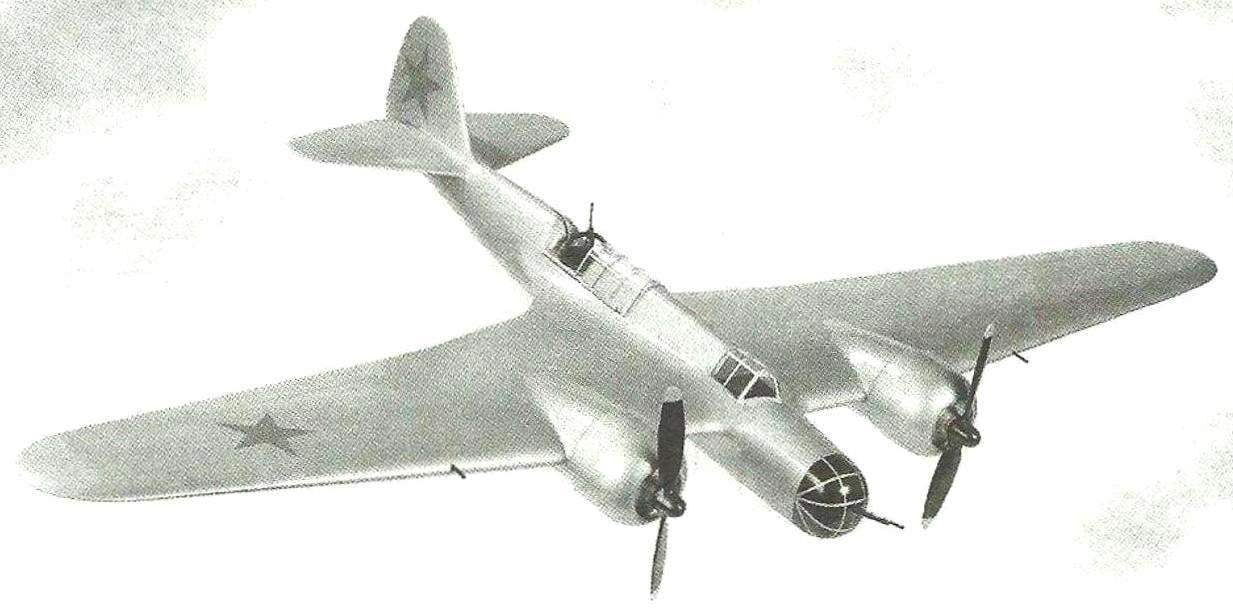 Tupolev SB aircraft was conceived as a bomber, overtaking fighters. It was natural to create a heavy fighter, designed primarily to combat the bombers. Total produced three prototypes of the SB. According to the decision of the meeting of February 14, 1934, one of them got American motors “Cyclone”, another French Hispano-Suiza, and the third was going to keep in reserve in the form of a set of units. Three days later appeared a decree of the Council of labor and defense (STO), which stated that the third prototype of SB should be equipped with the type of engine, which is better to manifest themselves on tests.
Tupolev SB aircraft was conceived as a bomber, overtaking fighters. It was natural to create a heavy fighter, designed primarily to combat the bombers. Total produced three prototypes of the SB. According to the decision of the meeting of February 14, 1934, one of them got American motors “Cyclone”, another French Hispano-Suiza, and the third was going to keep in reserve in the form of a set of units. Three days later appeared a decree of the Council of labor and defense (STO), which stated that the third prototype of SB should be equipped with the type of engine, which is better to manifest themselves on tests.
November 22, 1934 the people’s Commissariat of defense, sent to the General Directorate of aviation industry (GUAP) a letter in which he expressed concern that bombers, ordered by the military in 1935, motors Hispano-Suiza is not enough. Offered to charge TSAGI to install the third copy of the French engines, the Gnome-rhône 14Krsd. It was a two-row radial air-cooled engines with a nominal power of 800 HP, which was developed for plant No. 29 in Zaporozhye under the designation M-85. If the alteration was successful, partial SB in the second half of 1934 it would be possible to produce with these engines.
But the production of a new bomber was delayed and the increased production of M-100 (Soviet copy of “Spanish-Suez”) is quite enough for the whole series. However, from November 1934 to AGOS TSAGI on the basis of the security Council began to design a heavy fighter ANT-46 (DI-8). On the corresponding appeal to the leadership of the Institute, chief of the air force of the red army commander Yakov I. Alksnis wrote a resolution: “Not to oppose the redesign of the aircraft SAT in ДИ8”.
January 10, 1935, the Commission has presented a full-scale model of the ANT-46. It was an almost full analogue pilot bomber SB-2ИС, but with engines of the company “Gnome-Rhone”. The crew consisted of three people-a Navigator, pilot and radio operator-gunner, placed as well as in the bomber. Bomb armament of the fighter was absent. Due to the bombs have greatly increased small arms. In the console housed an automatic denaturaciei (recoilless) guns APK-4 in caliber 76 mm. put Them so that the gas jet does not impinge on the tailplane. Each gun had 15 rounds, one in the trunk and the rest in stores. In the bow stood motionless heavy machine gun ShVAK (namely the 12.7 mm machine gun, 20-mm cannon changed it later) ammunition 150 rounds. Defensive weapons in the fuselage, DI-8 (ANT-46) correspond to the SB, that is, consisted of one ShKAS turret Tur-9 at the top and the second on the pin in the hatch. In addition to the fighter in the center section were two fixed ShKAS machine gun, firing back. Each of them had 500 rounds. For reconnaissance in the fuselage of the aircraft provided for the installation of the camera AFA-13.
